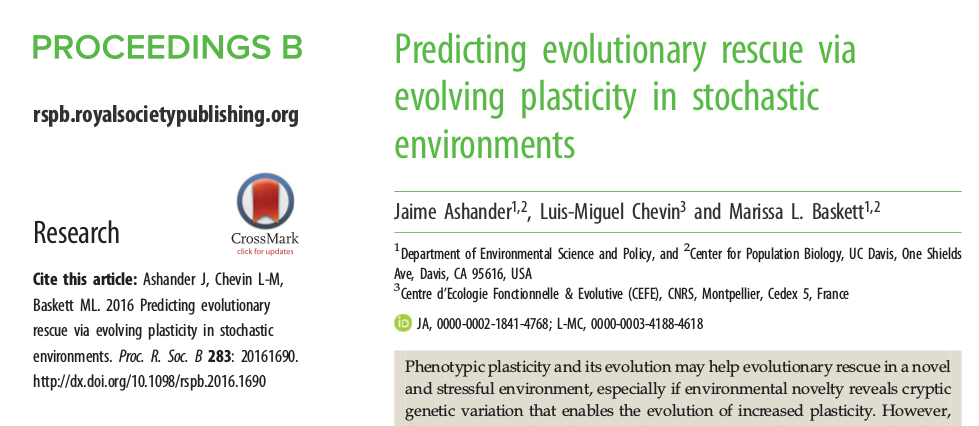Phenotypic plasticity and its evolution may help evolutionary rescue in a novel and stressful environment, especially if environmental novelty reveals cryptic genetic variation that enables the evolution of increased plasticity (panels a and b in the figure below). But the environmental stochasticity ubiquitous in natural systems may alter these predictions (panel c). This might occur, for example if high plasticity amplifies phenotype-environment mismatches. Although previous studies have highlighted this potential detrimental effect of plasticity in stochastic environments, they have not investigated how it affects extinction risk in the context of evolutionary rescue and with evolving plasticity.

My co-authors and I investigated this question by integrating stochastic demography with quantitative genetic theory in a model with simultaneous change in the mean and predictability (temporal autocorrelation) of the environment. We developed an approximate prediction of long-term persistence under the new pattern of environmental fluctuations with heightened plasticity (horizontal black line in panel d, above). While plasticity eventually decreases, and the growth rate increases, plasticity remains high—and the growth rate at the approximate value—for hundreds of generations (note the log scale in panels b and c, above).
We then compared predictions with numerical simulations of growth rate (top row, figure below), short-term (middle row) and long-term (bottom row) extinction risk for a range of values for predictability, additive variance in plasticity, and size of the shift in the mean optimum from the old to the novel environment.

Overall, our results show that reduced predictability increases extinction risk and reduces persistence. The reason this occurs is that in low predictability environments, mismatches increases stochastic load during rescue and prevent persistence. This understanding of how stochastic demography, phenotypic plasticity, and evolution interact when evolution acts on cryptic genetic variation revealed in a novel environment can inform expectations for invasions, extinctions, or the emergence of chemical resistance in pests.
